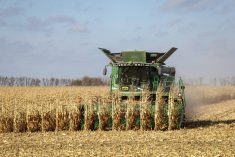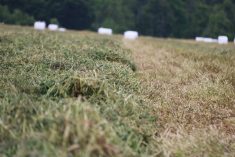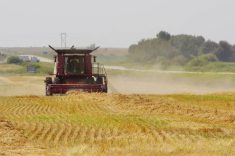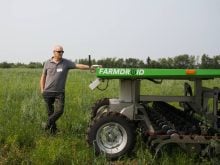Apply Avadex and Fortress in the fall after the surface soil temperature is below 4 C and within three weeks of soil freeze-up. This situation generally occurs by October 1 across Western Canada.
A single heavy harrow pass is sufficient for incorporation in minimum- and zero-till fields.
Good soil contact is necessary for these herbicides to work. That means ensuring crop residue or lumps of soil don’t prevent the herbicide granules from reaching the soil.
Avadex and Fortress shouldn’t be applied to burned fields for 12 months because the carbon prevents them from working.
Read Also

Manitoba canola embattled by verticillium
Verticillium stripe pressure has been growing in Manitoba, and canola farmers still have precious few tools to protect their crop from the disease.
A shallow harrowing will ensure good soil contact and is recommended for both fall and spring applications. Snowpack will help push the granules down to the soil.
A second harrowing operation in the spring will help redistribute the herbicide and “sharpen” control of both herbicides. Farmers should avoid sweeping their fields by moving piles of straw, which can pull the granules into concentrated areas leaving other areas untreated.
Application rates for both Avadex and Fortress are based on soil organic matter. Fields with higher organic matter require higher rates.
Avadex controls wild oats in barley, canola, spring and durum wheat, flax (not including low linoleic acid varieties), peas and canary seed.
Fortress controls wild oats, green foxtail and yellow foxtail in canola, flax (not including low linoleic acid varieties), mustard, barley and spring and durum wheat.
It also provides suppression of broadleaf weeds such as lamb’s quarters, kochia, redroot pigweed, Russian thistle and wild buckwheat.
For more information visit managewildoats.com.














